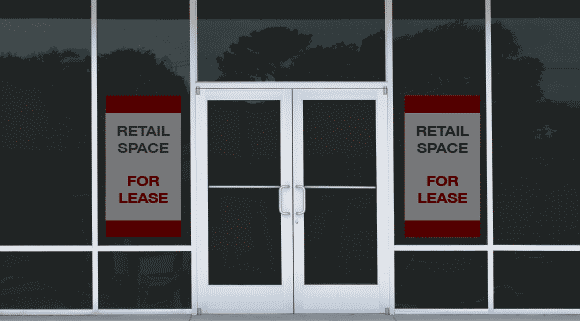“Dark Store Theory” and Property TaxationLegal interpretation could cost states millions
Even in a state as vibrant as Texas, we’ve all seen shuttered stores and failed shopping centers. It’s an inevitable byproduct of the daily tug-of-war of economic competition.

Texas communities depend on the property taxes generated by retail businesses. But should open, operating stores be taxed in the same way as closed ones?
That’s a basic question behind a thorny legal battle going on right now across the nation, a debate with the slightly sinister-sounding name dark store theory. And while that’s a great name for a band, it could cost Texas communities substantial amounts of tax revenue; Bexar County, for instance, has said its schools could lose hundreds of millions of dollars if dark store theory becomes accepted.
Big, Dark Boxes
Dark store theory primarily concerns the property taxation of big-box stores, behemoth department stores, hardware sellers and other outlets often running to 50,000 square feet or more.
The dark store theory of property valuation, championed aggressively by many big-box retailers, suggests that commercial properties should be appraised and valued the same whether they’re operating or shuttered. They favor appraising all big-box properties as if they were vacant or “dark” to calculate property value, arguing these locations will be difficult to sell because they have little appeal to subsequent buyers. In essence, they’re asking that these properties be appraised according to how the next occupant may use it.
Appraisal districts, by contrast, appraise such buildings according to their “highest and best use,” which in practice means appraising them as operating locations.
The difference between these perspectives, as you might imagine, can be significant. Dark store proponents often ask that the value of their property be reduced by more than half, in one instance from $82 to $20 per square foot. Big-box retailers have pushed dark store theory most vigorously, but the practice has spread to other commercial property types as a way to seek tax reductions. In Wisconsin, U.S. Bank used dark store arguments in an appraisal protest, while CVS has employed the theory in Michigan.
In Texas, the main proponent of the theory has been Lowe’s Home Improvement, which has 141 stores in the state.
The Stakes
Local governments use property tax revenues to finance community services such as fire and police, schools, parks, libraries, utilities, community colleges and road maintenance. Lower commercial property values could reduce funding for these services — or shift more of the burden to homeowners.
In Michigan, where the dark store appraisal approach has been applied widely, local taxing units have lost about $100 million in revenue, putting a financial strain on cities, counties and schools. Local governments there have been forced to cut funding for road maintenance and repair, employee benefits, libraries and other purposes due in part to successful tax appeals based on dark store theory.
Some worry the same could happen in Texas. Bexar County’s appraisal district estimates the county’s schools alone could lose $850 million in property tax revenue for the 2015 and 2016 tax years should proponents of the theory be successful. “The impact of this is huge,” says Karen Evertson, an attorney who often represents the Bexar Appraisal District in court, “especially because Texas doesn’t have a state income tax. A reduction in local property tax revenue hits Texas harder than other states.” The potential impact is particularly serious for our public schools, which rely on property taxes for nearly half their funding.
Dark Store Theory in Texas
The rise of dark store theory began after the Great Recession, when stores were “going dark” in many parts of America. The Texas real estate market was largely insulated from the effects of the recession, and didn’t see as much market volatility as many other areas. Even so, protests based on dark store theory have spread to Texas.

